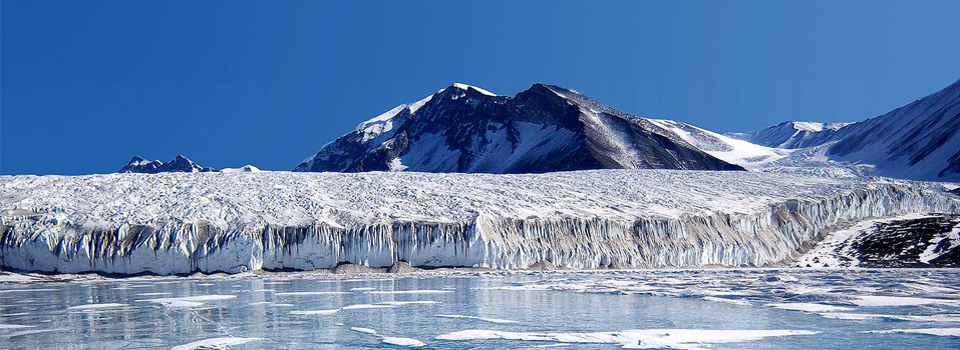Ocean2ice: Processes and variability of ocean heat transport toward ice shelves in the Amundsen Sea Embayment (iSTAR A)
Principal investigator: Professor Karen Heywood, University of East Anglia

Our science challenge
There is a suggestion that the ocean is providing more heat to melt the underside of ice shelves than it used to. Although only a few degrees above freezing, ocean water is warm enough to give up a lot of heat as it washes underneath. At present, no one knows exactly how ocean water gets beneath glaciers but there are a number of possible explanations that we will test. It may be that the wind forces the water there; it could be waves going round the Antarctic continent; or it may be that the sea floor troughs that were gouged by glaciers thousands of years ago channel water up.
Our research goal
Our aim is to discover how and why warm ocean water gets close to the ice. Using innovative technologies we will make measurements and observations that are essential for improving a wide variety of computer models used by the international scientific community to forecast future climate and sea level. These range from highly sophisticated and complex climate models that try to include the interactions between ice, ocean and atmosphere, to the much simpler models that test our understanding of the physics at play.
Our ocean mission
Our ocean research investigations will be carried out from the research ship RRS James Clark Ross during the 2013-14 Antarctic summer. During our 30-day research cruise Innovative technologies and instruments will be put into the water near the glacier to help us discover how and why warm ocean water gets close to the ice.
A fleet of ocean robots known as Seagliders will measure the temperature, saltiness and current speeds at different depths in the water. Each time the Seaglider reaches the ocean surface it will send back data using satellite phone technology. The scientists will use the information from Seagliders to work out how the warm water is reaching the iceshelf and whether this is likely to continue in future.
During the Antarctic winter, when the ocean surface is covered by sea ice and inaccessible for research ships, we’ll be able to collect observations by enlisting the help of 15 elephant seals. Tiny sensors, temporarily glued to their fur, will capture information such as the temperature and the saltiness. The same mobile phone technology will send information back to the scientists in their laboratories. This research is important also for informing conservation biology studies and will give us a better indication of how vulnerable the seals might be to climate change. The sensors fall off when the seals moult their fur.
Our research outcomes
Our observations and measurements are essential for improving a wide variety of computer models used by the international scientific community to forecast future climate and sea level. These range from highly sophisticated and complex climate models that try to include the interactions between ice, ocean and atmosphere, to the much simpler models that test our understanding of the physics at play. Through a partnership with scientists from The Met Office’s Hadley Centre, our results will improve how the ocean is simulated in computer models. We will share our results with the Department of Energy and Climate Change, the government department leading the effort to tackle the challenges posed by climate change. The ocean moorings deployed during the research cruise will contribute to the current global ocean observing network. Data will be transmitted in real time using satellites so that it can be used in weather and ocean forecasts.
